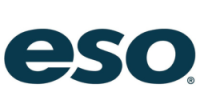Focus will be on improved communication, mobile technology and acute stroke
AUSTIN, Texas – ESO, the leading data and software company serving emergency medical services (EMS), fire departments and hospitals, today shared the trends it predicts will have the biggest impact on hospitals in 2019: Tighter communication between EMS agencies and hospital emergency departments; mobile and smartphone technology will play a greater role; acquisitions and mergers will be more non-traditional; and approach to acute stroke will continue to evolve.
“We will continue to see much more integrated communication across the entire healthcare spectrum, and this will be especially true for prehospital to hospital,” said Allen Johnson, Vice President of Healthcare for ESO. “One of the key technologies to help facilitate this integrated communication will be mobile. Mobile devices will play a key role to help facilitate this integrated communication. We’ll also see an ongoing evolution in the way we approach acute stroke – including stroke scales and transport decisions.”
Key Hospital Predictions for 2019:
Tighter communication between EMS agencies and hospital emergency departments: There will be a greater emphasis on integrated and efficient communication between hospital emergency departments and EMS agencies, especially around high-acuity patients. Hospitals will be looking for improved communication to better prepare for incoming patients while EMS agencies will look for outcome data from hospitals on transported patients to improve training programs and ensure proper reimbursements.
Mobile and smartphone technology will play a greater role:
Improved mobile technology will replace dated technologies in hospital emergency departments to ensure timely communication with inbound EMS transports, between hospital departments and personnel, and with other hospitals. In particular, ease of acquiring and sharing patient-specific data from the bedside will facilitate insights into patient history, clinician thought process, and rapid assembly of specialty teams for critical patients.
Acquisitions and mergers will be more non-traditional:
Merger and acquisition activity will continue in 2019 but will be more non-traditional than hospital-to-hospital activity. For example, private equity firm Veritas Capital acquired athenahealth in late 2018. There will be a greater infusion of investment dollars as well as partnerships and alliances across the entire healthcare spectrum.
Approach to acute stroke will continue to change:
In 2018, new information (such as the DAWN study) about stroke response times had a ripple effect for prehospital care through the emergency departments to definitive care. 2019 will see the medical community reach agreement on the fundamentals of care for acute stroke. This will include definitive, consistent classification of stroke centers, allowing EMS agencies to make better transport decisions. Ultimately, decisions around transport will likely be made with reliable hospital outcome information.
Download the 2019 Hospital Predictions whitepaper here.
About ESO
ESO is dedicated to improving community health and safety through the power of data. Since its founding in 2004, the company continues to pioneer innovative, user-friendly software to meet the changing needs of today’s EMS agencies, fire departments, and hospitals. ESO currently serves more than 14,000 customers throughout North America with a broad software portfolio, including the industry-leading ESO Electronic Health Record (EHR), the next generation ePCR; ESO Health Data Exchange (HDE), the first-of-its-kind healthcare interoperability platform; ESO Fire and ESO FIREHOUSE Software for fire departments; and ambulance revenue recovery/billing software. ESO is headquartered in Austin, Texas. For more information, visit www.esosolutions.com.












